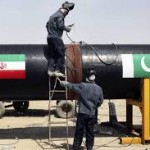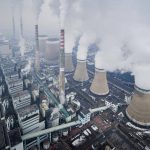
China’s clean energy drive faces constraints
Clean energy remains at the heart of China’s strategy to reduce air pollution and constrain the rise of carbon emissions. However, constraints to the successful implementation of these policies remain in the short-term. These include moves to stimulate the economy, a relaxation of air pollution goals and the continued expansion of coal-fired power generation capacity. High levels of pollution across north China early in the week of 11-18th November 2018 is a reminder of the consequences of this mix of policy priorities.
Long-term objectives
The last few months have seen three indications that the government efforts to reduce pollution are being sustained. These include:
- A more ambitious target for renewable electricity and a draft regulation for green energy certificates to promote renewable electricity.
- A new three-year plan to reduce air pollution.
- A sustained rise in the imports of natural gas.
At the Paris Climate Change meeting in December 2015, China announced that non-fossil fuels would account for a minimum of 20% of its energy mix by 2030. This was supplemented by a target of 15% for 2020 in the Thirteenth Five-Year Plan for Energy Development (2016-2020). In late September 2018, China upgraded its target for renewable energy and issued a draft plan for green energy certificates. The new target is aimed solely at electricity consumption and requires that 35% be generated from renewable energy by 2030, up from 25% in 2017.
Two new measures
The government has recently introduced two new measures targeting the energy industry and heavy industry: a green certificate scheme and a new clean air plan. The draft regulation on green energy certificates issued by the national Development and Reform Commission (NDRC) in September 2018 supersedes one issued early in 2017. The earlier version placed the renewable energy obligation on power generating companies.
Legitimate objections from these enterprises caused the NDRC to adjust the system so that the obligation is now placed on grid and retail companies – in other words, actors which, in principle, have a choice in what forms of power they purchase. This is the approach taken by most countries deploying such a system.
Certificates would be of two types: for hydroelectricity and for non-hydro renewable electricity. The certificates would be issued to renewable energy generators. The entity purchasing the renewable electricity would receive the green certificate from the generator. These certificates could then be traded between enterprises. At the same time as releasing this draft regulation, the NDRC raised the targets for non-hydropower consumption in Inner Mongolia, Yunnan and Xinjiang.
Earlier this year, in July, the government published its new plan for clean air – the “Three-Year Action Pan for Winning the Blue Sky War 2018-2020”. This follows on from the earlier plan for the period 2013-2017 that came to an end a year ago . The first plan focused on just three areas: Beijing-Tianjin-Hebei, Shanghai and the Pearl River Mouth.
The new scheme covers hundreds of cities at prefectural level and above which have not met earlier government standards for air quality. North China remains a key area of concern. It highlights the need for improvements across a region stretching from Xi’an in the west to Hebei province in the east, where pollution has worsened in some locations.
The scope of the current strategy has been widened to include ozone and nitrogen oxides, in addition to particulate matter. The new plan builds on a large amount of research aimed at identifying the various sources of pollution. This has led to the development of a greater number of indicators to assess the performance of different jurisdictions. Local government officials will face even more pressure to improve air quality but will receive financial support to do so.
It is not clear that these measures address all sources of air pollution. Recent research by Harvard and Tsinghua Universities and the Harbin Institute of Technology indicate that oil refineries, petrochemical plants and motor vehicles continue to make a significant contribution to extreme air pollution in parts of northern China.
A further challenge arises from the behaviour of local government officials. The Ministry of Ecology and Environment has recently reported that its inspection teams are discovering that some local governments are systematically undermining a wide range of national pollution reduction measures, including failing to close outdated industrial plant and to enforce environmental standards on existing facilities.
The continued rise of coal and gas
More serious is evidence that the production and consumption of coal is rising. Despite the closure of many coal mines, output from some areas is growing to meet demand. The decline in annual coal production that occurred after 2013 started to reverse in 2017 and this trend appears to be continuing.
This discouraging outlook is further coloured by the ongoing construction of more than 120 GW of coal-fired power stations that were part of a new wave of projects launched after investment approval was delegated from central government to provinces in 2013. Of this capacity, only 19 GW has been officially sanctioned. The balance was subject to restrictions imposed by the central government when it tried to take back control in 2016.
It appears now that these restrictions delayed rather than stopped these projects. If they are commissioned, demand for coal may rise further. At the same time, the average utilization of thermal power plants will decline further and financial losses will mount.
China’s plan to reduce coal consumption requires more natural gas in the energy mix. Domestic gas production is rising only slowly, and so the country has had to import more, especially in order to meet winter demand for clean heating. The first nine months of 2018 saw an increase of about 34% over the same period in 2017. Much of the growth has been in the form of liquified natural gas (LNG) and the country may overtake Japan as the world’s largest LNG importer. Gas imports by pipeline climbed by 20% over the first 8 months of the year.
In the short-term, the continued growth of gas imports will be constrained by the capacity of LNG gasification terminals and of import pipelines. However, more LNG terminals are under construction and the Power of Siberia pipeline is due to be commissioned at the end of 2019 with an ultimate capacity of 30 billion cubic metres per year. One other variable is the 10% tariff imposed by China on imports of LNG from the USA. If demand remains strong, this may not deter Chinese buyers.
Outlook
The outlook for cleaning up the energy sector and reducing air pollution is not favourable in the short-term, but the issue is certain to remain high on the government’s long-term agenda. More fundamentally, the various strategies to clean up the energy sector are being pursued at the same time as the government is introducing competition in the power sector, planning a nationwide carbon trading market starting with the power sector.
Local governments, sector regulators and industrial actors will face a steep learning curve. Opportunities for market-distorting behaviour will also arise. As a result, the outcome of the competition between coal, gas and renewable energy will remain unpredictable.






